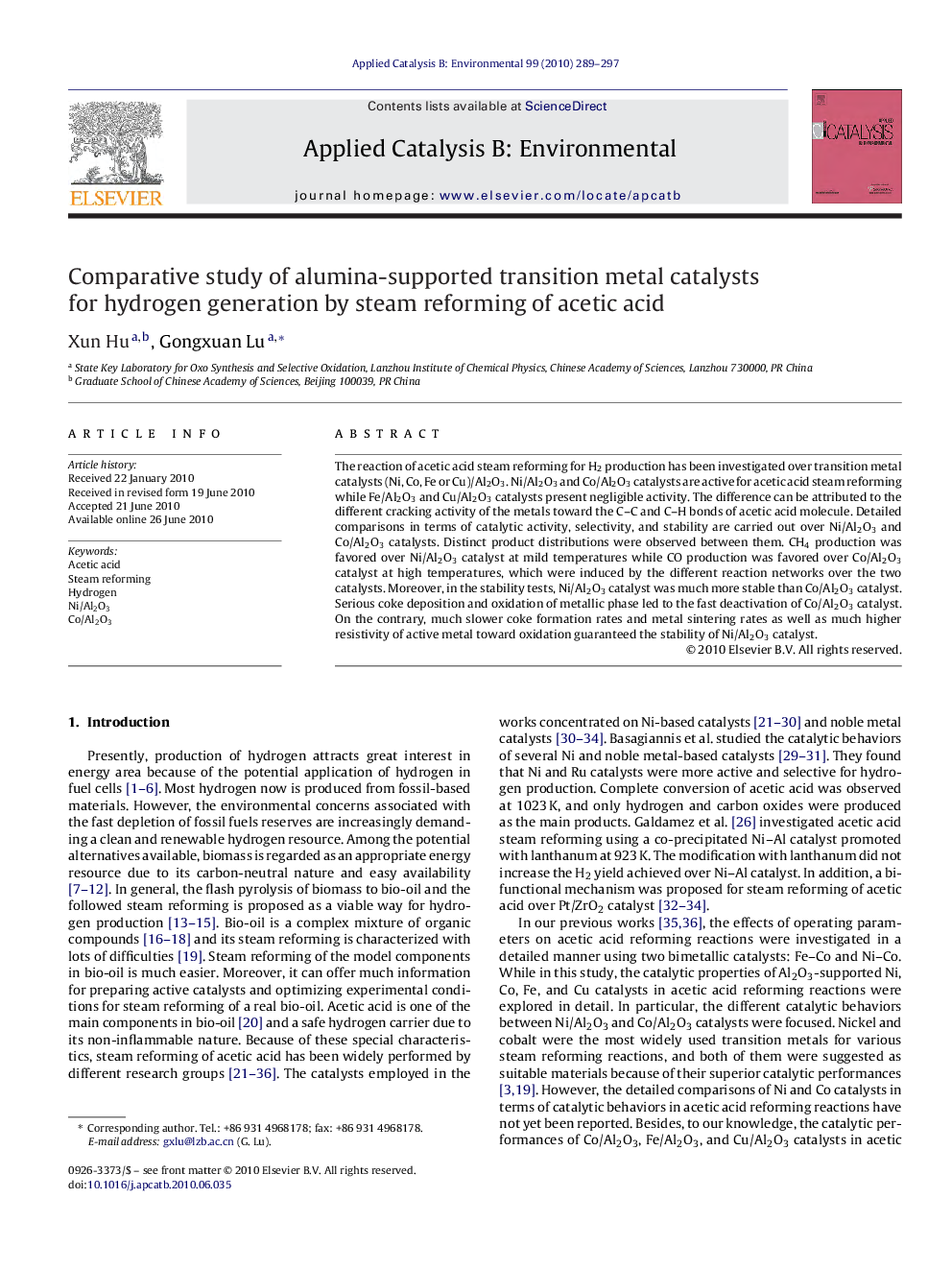| کد مقاله | کد نشریه | سال انتشار | مقاله انگلیسی | نسخه تمام متن |
|---|---|---|---|---|
| 47239 | 46464 | 2010 | 9 صفحه PDF | دانلود رایگان |

The reaction of acetic acid steam reforming for H2 production has been investigated over transition metal catalysts (Ni, Co, Fe or Cu)/Al2O3. Ni/Al2O3 and Co/Al2O3 catalysts are active for acetic acid steam reforming while Fe/Al2O3 and Cu/Al2O3 catalysts present negligible activity. The difference can be attributed to the different cracking activity of the metals toward the C–C and C–H bonds of acetic acid molecule. Detailed comparisons in terms of catalytic activity, selectivity, and stability are carried out over Ni/Al2O3 and Co/Al2O3 catalysts. Distinct product distributions were observed between them. CH4 production was favored over Ni/Al2O3 catalyst at mild temperatures while CO production was favored over Co/Al2O3 catalyst at high temperatures, which were induced by the different reaction networks over the two catalysts. Moreover, in the stability tests, Ni/Al2O3 catalyst was much more stable than Co/Al2O3 catalyst. Serious coke deposition and oxidation of metallic phase led to the fast deactivation of Co/Al2O3 catalyst. On the contrary, much slower coke formation rates and metal sintering rates as well as much higher resistivity of active metal toward oxidation guaranteed the stability of Ni/Al2O3 catalyst.
Ni/Al2O3 and Co/Al2O3 catalysts are active for acetic acid steam reforming while Fe/Al2O3 and Cu/Al2O3 catalysts present negligible activity. The difference can be attributed to the different cracking activity of the metals toward the C–C and C–H bonds of acetic acid molecule.Figure optionsDownload as PowerPoint slideResearch highlights▶ Catalytic behaviors of the transition metal catalysts, (Ni, Co, Fe or Cu)/Al2O3 in steam reforming of acetic acid are much different. Ni/Al2O3 and Co/Al2O3 catalysts are active while Fe/Al2O3 and Cu/Al2O3 are inactive, due to the different cracking activity of the metals toward the C–C and C–H bonds of acetic acid molecule. ▶ Ni/Al2O3 and Co/Al2O3 catalysts present distinct product selectivities. CH4 production is favored over Ni/Al2O3 catalyst at mild temperatures while CO production is favored over Co/Al2O3 catalyst at high temperatures, due to the different reaction networks over them. ▶ Ni/Al2O3 catalyst is much more stable than Co/Al2O3 catalyst. Serious coke deposition and oxidation of metallic phase is the reason for the fast deactivation of Co/Al2O3 catalyst. In converse, much higher resistivity toward coke formation, metal sintering and oxidation guarantee the stability of Ni/Al2O3 catalyst.
Journal: Applied Catalysis B: Environmental - Volume 99, Issues 1–2, 31 August 2010, Pages 289–297